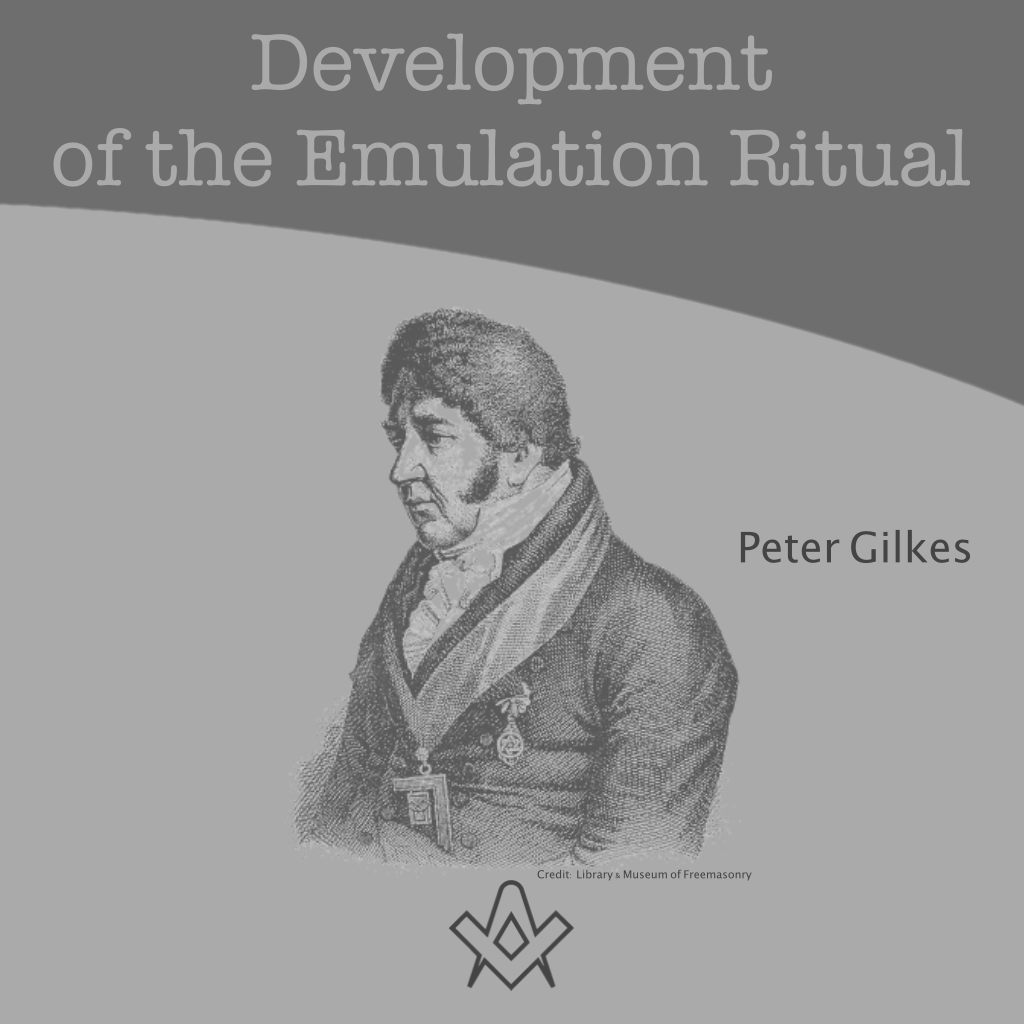Relevant historical background in the evolutionary development of the Emulation Ritual
The lines that are presented correspond to a study carried out by my godfather in the Masonic Order on Q: .H :. Nelson Morales Barrientos, who already decorates the Eternal East. He shared many studies with me so that at some point they would serve as a light for both the Mason and the layman who faithfully seeks the truth. These pages are ‘In Memoriam’ of my Godfather and Q: .H :. Nelson Morales Barrientos. Former officer of the Grand Lodge of Chile.
Carlos Francisco Ortiz
Editor’s Note: This article has been translated from the original Spanish.
The Ritual of Emulation is characteristic of the lodges that work under the jurisdiction of the English Constitution, as well as of those other Masonic powers, such as the Grand Lodge of Chile, which have taken as a reference of the Masonic regularity the postulates of the United Grand Lodge of England.
To know the origins of Emulation, and the Masonic system to which it belongs, it is necessary to go back succinctly to the beginnings of Royal Art.
Around the fourteenth century, the corporate organisation of groups of artisans who adopted the Guilds’ modality began in England.
The operative masonic corporate sense was very precise: to establish an association of artisans who come together to regulate their trade and generate a monopoly that allows them a better pay.
Another purpose was to obtain the recognition of the Crown and enjoy certain prerogatives.
Each guild was constituted as a rudiment of a union, mutual or professional association of arts and crafts.
These guilds gained such importance that the English Parliament decreed in 1355 that all the craftsmen and ‘people of the mysteries’ choose a baton of command.
We also have for historical analysis the ordinances, statutes and decrees of the English Parliament that allow in some way to study the scope of the corporate scope of the Freemasonry of Works.
Indeed, the Statute of Labourers of the year 1350, fixes the wages of the workers, and the words ‘freestone’ and ‘mason’ are mentioned.
In 1356, the ‘Regulations of the London Masons’ are registered, which, although they do not mention a specific organization, establish labour standards and learning systems.
It is very interesting to see that in 1364, thirty-two companies of arts and crafts were registered, among which the tailors, the manufacturers of gloves, the tanners, the manufacturers of armour and the jewellers, amongst others, stood out.
Sixteen years later, in the registry, forty-eight companies are rolled and in place seventeen is The Company of Freemasons, and at thirty-four, The Company of Masons of London.
The vast majority of these groups had their own distinctive clothing, which in English is defined as ‘livery’, which denotes their own specific uniform; so, we are talking about trades with distinctive clothing.
The livery of The Company of Masons was always black suit, white gloves and apron of the same colour and the distinctive jewel of the rank.
On the other hand, from the time of Charlemagne, in the eighth century to the middle of the twelfth century, the knowledge and practice of architecture, painting and sculpture in England were mostly limited to the monks of the monastic orders; and for the same reason abbots and bishops personally directed the works of religious constructions.
There are several monastic orders that contributed a lot to architecture and its corporate origin, among which the following stand out: the priestly Orders of San Benito or Benedictines, the Cistercians, and within them we can mention monks and abbots who for the purposes of this work we will briefly address just a few of them.
The English monk Winfrid, better known in ecclesiastical history as Saint Boniface, in the eighth century organized a special class of builder monks who received the name of Magistri Operun or Masters of Works, whose specific tasks were perfectly delimited by headings, namely: architects and designers, painters, sculptors; while others were engaged in gold and silver embroidery.
Nor can we ignore the contribution of the Order of Cluny which incorporates the laity into the abbey and regulates for the first time the magistri caementarii [stone masons].

Saint Boniface. Engraving by A. Jameson
IMAGE LINKED: Wellcome Collection. Attribution 4.0 International (CC BY 4.0)
On many occasions, and due to the magnitude of the works, lay people – or laymen – were hired who had to submit to the ordinances of the monks.
Further details can be found in the Halliwell Manuscript and the York Ordinances amongst other legitimate historical documents that are preserved in perfect condition.
The intimate and constant association of these laymen with the monks, resulted in the abbey naturally becoming a true school of architecture in which knowledge was gradually transmitted throughout England through the trade.
In this way, the union of these religious and lay architects flourished in the midst of an uneducated people, manifesting skills of a higher and more intelligent class that earned them certain privileges to exercise this office.
Organization of lay operational masonry

Statue of Erwin von Steinbach © Ralph Hammann
IMAGE LINKED: Wikimedia Commons. Attribution 4.0 International (CC BY 4.0)
During the Middle Ages, the English Freemasons were subjected to many difficulties and adversities, due to the repeated invasions of the Picts, Danes, Saxons and Scots, which made it difficult to carry out the work.
In the year 926 e\v\ , a General Assembly was verified in the City of York that promulgated the first Masonic Constitution for England and it is estimated that it is the oldest document of the Order known to this day.
This Constitution has always been considered the Basic Law of English Freemasonry.
Another of the important events that made possible the evolutionary development of Operative Freemasonry in Europe was the one that occurred in the German city of Strasbourg in 1275, when Erwin von Steinbach, the architect of the cathedral of that city, summoned a large number of Freemason architects from Germany, England and Italy.

Erwin von Steinbach’s Notre-Dame de Strasbourg By Finster Dernart – Own work, CC BY-SA 2.5
IMAGE LINKED: Wikimedia Commons. Attribution 4.0 International (CC BY 4.0)
A code of regulations was promulgated and the fraternity was organised to emulate the assembly held in York some three hundred and fifty years ago.
Three classes of craftsmen were recognized: Masters or Heads of Works, Companions of the Office and Apprentices, together with them the signs of recognition that were adopted by the English Masons were established.
In the seventeenth century, Operative Freemasonry had acquired such an evolutionary development that the Fraternity was at the same time a guild, union, school and brotherhood.
However, soon the period of splendour would culminate together with the completion of the last cathedrals.
Monastic origins of English Freemasonry
It seems a total contradiction in light of the history of the monastic priestly Orders and the construction of cathedrals, abbeys and other constructions ordered by the Order of the Temple, to point out that Freemasonry should only have a rationalistic expression and its syncretic rituals devoid of mystical implications.
Indeed, the accounts of the construction of the Temple of Solomon in particular by Bede, the Venerable of the Benedictine Order, is a great contribution to the study of our speculative roots and the ritual of Emulation.
Perhaps this is news to many of my brothers, and a discovery.
In the Benedictine book De Templo Salomonis Liber, we find direct connections with monastic masonry and the ritual of Emulation.
The Temple of Solomon seen from the perspective of the Monastic Orders is also the symbol of Jesus Christ, the man, who through his teachings seeks to perfect both the internal and external man.
For the Venerable Bede, Jesus, the Christ, is the cornerstone of the building ‘founded on the foundations’ and the stone that the builders left lying on the path of which our rituals speak.
In the fourth chapter of the book in question, it is indicated that:
Such stones are indeed ordered first to be squared, and thus square they are to be placed as a foundation.
Well, everything that has been square, in any way that you knock it down, always remains firm.
To whose image the hearts of the elect are splendidly assimilated, who have learned so much to remain firmly in the faith that by no adversity, not even death itself (Transition) can they be separated from the rectitude of state.
Thus, a squared and worked living stone is used for more expert hands to place them where they belong according to the plan of the work.
A stone squared in accordance with the teachings contained in the Emulation ritual is a Mason or ‘living stone’ that practices both the theological virtues: Faith, Hope and Charity, and the cardinal virtues: Prudence, Temperance, Fortitude, Justice.
The greatest virtue of all of them being Charity in all its expressions.
Consequently, a faithful and true Mason is something more concrete than a good man, well inspired, disciplined, of great eloquence and who accumulates a great deal of information.
A Mason is a square stone worthy of emulation, useful and necessary for the work of integral improvement of the man who lives and coexists in society.
On the other hand, for the majority of medieval writers, Christian temples are a prefiguration of the Celestial Jerusalem; the point within the circle of the globe.
The great contribution of the monastic, sacred architectural line is that it presents architecture as the great tool that the GADU uses to carry out its plan, in such a way that terrestrial architecture is a continuity of the celestial, and the symbolism of the first it corresponds to the second, ‘as above, so below.’
Birth of Speculative Masonry
In the seventeenth century in England and Scotland, the guild of works masons began to accept honorary members who were called ‘Theoretical Masons’, ‘Gentry’ or ‘Accepted Masons’.
For the operatives, including blacksmiths, cabinetmakers, glaziers, plasterers, sculptors, bricklayers, the work was their reason for life, their livelihood, or the continuity of the inherited family tradition in many cases.
In turn, for the speculative, the entrance to masonry by way of meaning was the tavern, the illustrative discourse of the liberal arts and sciences, of discussions of ideas, travel stories and legends about the construction of various latitudes.
It is striking that the Order does not have an official history and for this reason many books have been written that present numerous theories about our origins partially demonstrated and it is said in a doctoral tone that Speculative Freemasonry was born as a revival of the fallen Freemasonry of works.
The acception of the Speculative Masons
The incorporation of Speculative Masons was carried out through a ceremonial called ‘acception.’*[Ed. see endnote]
Focusing more precisely on the subject at hand, we must ask ourselves: How did the Acception work in a Speculative Lodge in 1686 in England?
Few antecedents exist and among the most prominent is a work by Dr Robert Plot in 1686, a member of The Royal Society (The Royal Society for the Advancement of Natural Knowledge, founded on November 28, 1660), who was not a Mason, wrote in a passage from his work Natural History of Staffordshire, the following:
To receive in this society, they summon a meeting (or Lodge, as it is sometimes said).
They must meet, at least 5 or 6 old members of the Order. The candidates are offered a pair of gloves, for themselves and their wives, and also a lunch according to the custom of the place.
Then we proceed to the reception that consists, mainly, in the communication of certain secret signs, which serve as recognition throughout the Nation to be helped wherever they are when they go on a trip.
Since if someone, otherwise unknown, can show these signs to a companion of society, who they call an accepted Mason, the latter, leaving whatever occupation he has in hand, must welcome him, accompanied or not, wherever he is, Even if it is at the top of a steeple, you must take an interest in their needs and do what you can to satisfy them.
If you were looking for work, for example, I would do my best to find it for you. If this is not possible, he should help him with money, or at least take him into his home until he finds employment. This is set forth in one of its articles.
The lodges at the time of the founding of the Grand Lodge of London and Westminster on June 24, 1717 [1721], each had their respective Venerable Master, a secretary, sometimes a treasurer, a Tyler or Outer Temple Guardian who also served as Steward or Banquet Master.
Around 1724, The Old Lodge of York became a Grand Lodge of All England, and in 1725 and 1736, the Grand Lodges of Ireland and Grand Lodge of Scotland were created, respectively, imitating what happened in London, without the help or intervention of England, but conserving their ancient traditions.
The Military Masonic Lodges
Along with the aforementioned, it is necessary to note that during the eighteenth century, a large number of military lodges were established that had the right to legally meet in any place where the regiment that sheltered it was located.
The first military lodges were founded in Ireland and Scotland in 1735 and 1743 respectively, while the first English military lodge was installed in the 8th Infantry Regiment in 1755.
These lodges were itinerant, and the Royal Navy also had Masonic bodies that spread the Masonic values in distant lands that included the Southern Cone of America.
The alleged revival of the Alicaida Masonry of Works.
Much has been written on this subject but in the Transactions of the Quatuor Cononati Lodge 2076, the Masonic Research Lodge in London and the investigations of the archives of the London Company of Masons, there is no evidence of concerted activities for such revival.
On the contrary, they show that in the same building the Works Freemasonry of the London company coexisted, and the Masons accepted the latter in two independent organizations: the ‘Masons’ (local Speculative Freemasons) and the ‘Freemasons’ (Speculative travelling Freemasons).
The beginning of the English Masonic Schism
After the formation of the Grand Lodge of London and Westminster [Grand Lodge of England], it was common to find signs in taverns offering Masonic initiation at a fee.
In such a way that Freemasons began to circulate everywhere with squalid initiatory knowledge travelling through lodges.
With the creation of the Grand Lodge of London in 1717 [1721], an evolutionary process of ritual, of innovations and simplifications generated a Masonic schism that faced two currents for seventy years: the traditional ‘ancient’ Atholl Masons, or ‘Antients’ as they are also called, that adhered to an old provincial Freemasonry of the North of England, and the reformers or ‘Moderns’.
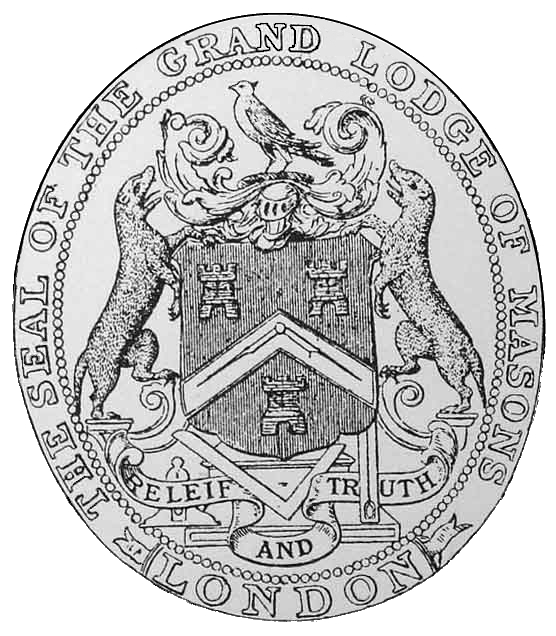
Seal used by The Premier Grand Lodge of England (Moderns) on Masonic certificates By J. Ramsden Riley – Quatuor Coronatorum Antigrapha Vol VIII 1891, Public Domain,
IMAGE LINKED: Wikimedia Commons. Attribution 4.0 International (CC BY 4.0)
The Ancients practiced a much more extensive system of teachings, whereas the Moderns made profound innovations in the City of London, moving away from the traditional and original Freemasonry of the provincial court.
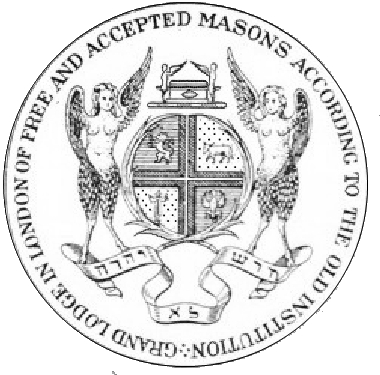
By J. Ramsden Riley – Quatuor Coronatorum Antigrapha Vol VIII 1891, Public Domain,
IMAGE LINKED: Wikimedia Commons. Attribution 4.0 International (CC BY 4.0)
The Ancients manifested an open affinity with the Grand Lodge of York, which was evident when the Grand Secretary of the Antient Grand Lodge, Irishman Laurence Dermott, pointed out:
The ancients under the name of Free and Accepted Masons according to the Ancient Institutions, and the moderns under the name of Free Masons of England, despite their similarity of names, differ excessively in fact, ceremonial, knowledge, Masonic language, and installation, so much so that they have always been, and still are, two totally distinct societies. independent of each other.
A modern Mason can communicate all his secrets to an Old Mason and be sure, but an Old Mason cannot, with equal confidence, communicate all his secrets to a Modern one without the Corresponding Ceremony.
For just as a science comprises an art, this is how ancient Masonry contains all that is of value among the modern ones, as well as many other things that cannot be revealed without additional ceremonies.
The Lodges of Promulgation and Reconciliation
In April 1809, the leaders of the modern Masons came to the conviction that the English Masonic schism should be put to an end, and that the Union was essential.
That was how the accusation of irregularity with respect to the remaining Lodges of other Grand Lodges was eliminated; that were not part of the records of the moderns.
To agree to the of cessation of hostilities, the modern Masons founded the Lodge of Promulgation 1809 with the objective of reviewing the differences that kept them apart and promulgating the ancient landmarks of the Order as unique.
An important resolution passed by the Lodge of Promulgation declared that ‘the installation of the Master of Lodges is a true Landmark of the Order and must be faithfully observed’.
The Lodge of Promulgation completed its task in 1811, and from the agreements established between the two Grand Lodges that worked in separate Assemblies, the Act of Union was drawn up and initialled at Kensington Palace in November 1813.
As part of the agreements, the Reconciliation Lodge was founded with a Patent Letter of the Grand Lodge of Moderns on 7 December 1813, which was made up of eighteen members, nine from each Grand Lodge and whose mission was to establish the ritual and procedures of work.
There is consensus that the ancient criterion prevailed in most of the ceremonies of the three symbolic degrees; the floor work of the Deacons was restored, and discussions began to accept the Royal Arch within symbolic Freemasonry.
Thus, clearly the ‘modern’ adjusted to the line of the ‘ancient’, and the Union began to be founded.
The Lodge of Reconciliation also held demonstrations outside London especially for lodges distant from the capital.
To give an example, the Obligation of the Third Degree was taken by all the members of this lodge moments prior to the signing of the Act of Union which, as is known, occurred in London on December 27, 1813, during the winter solstice [also the festival of St John the Evangelist].
Thus, was born the United Grand Lodge of the ancient, free, and accepted Masons of England; a relevant historical event that helped put an end to the English Masonic schism.
The Act of Union declares among other agreements that:
the pure and ancient Freemasonry of England are the Degrees of Apprentice, Companion and Master including in the third degree the Order of Masons of the Royal Arch of Jerusalem.
The Emulation Ritual
The name of Emulation has its origin in a Lodge of Instruction known as Emulation Lodge of Improvement No. 256.
This lodge met for the first time on 5 October 1823, to perform demonstrations and practice without errors the Ritual approved by the Lodge of Reconciliation on 5 June 1816.
In its beginnings, the Masonic work of this lodge consisted of a relaxed meeting around the tracing board, in which the brothers talked, smoked and consumed drinks, deducing teachings and verifying details of the ritual.
The Venerable Master asked questions about the Ritual to the Chief Warden, who responded to illustrate the Brothers in attendance.
At other times, the questions were asked to each Brother gathered, which they answered in turn. Currently this modality is compiled in a book known as Masonic Lectures that consists of fifteen question and answer sections that contain important aspects of the ritual and key phrases in sequence.
These ‘instructional catechisms’ consist of seven sections for the First Degree, five for the Second Degree, and three for the Master Mason Degree.
The foundation of Emulation was from its creation to prevent deviations and interpretations that would tend to distort the Ritual received from the Lodge of Reconciliation.
This ritual, in the opinion of scholars and researchers, is the word itself naked, without linguistic flourishes or inlays of phrases or adjectives to embellish it, in such a way that its interpretation is easier to assess.
The Emulation Lodge of Improvement was authorised only in 1969 to publish the first edition of the Emulation Ritual.
There are several private versions of the ritual before the date recorded, so this shows the ignorance of several authors who criticise Emulation, pointing out that it is impossible to keep a ritual without variations by heart for so many years.
This lodge meets every Friday from October to June at the headquarters of the United Grand Lodge of England (Freemasons’ Hall) located on Great Queen Street in London.
There is a prize consisting of a silver matchbox engraved with the name of the Master Mason that can fully recite the Emulation ritual without errors.
The work of the Venerable Master of the Lodge and that of both Wardens has a first priority in the Meetings that are celebrated in this Rite and that is to know how to stage and transmit the essence of the ritual and its symbolism to the other brothers.
This requires three basic efforts:
- Understand the mechanics of the floor movements or ‘Working Floor’ in charge of both Deacons and Director of Ceremonies during the Parties
- Understand and know sufficiently the meaning of the different phrases, questions and answers of the Ritual, to be able to pronounce them freely, with the appropriate tone and accent (preferably from memory) and to be able to stage the works in a fluid and natural way.
- Live and internalise the Ceremonies.
The previous points allow the brothers to feel immersed in the Ritual and in each meeting, there are different ranges of phrases and symbols that make us reflect, understand, and deepen its message.
The Order of Masons of The Royal Arch of Jerusalem
For all the scholars and historians of Freemasonry of the British Isles, it is a proven fact that the Grand Lodge of London of 1717 [1721] made innovations in the old Freemasonry and dismembered its original structure, leaving out important rituals.
This is the case of the Holy Royal Arch that was part of the Third Degree and the Master Mason of the Brand that completes the teachings of the Second Degree.
As a consequence of the Act of Union in England signed on December 27, 1813, the Order of Masons of the Royal Arch of Jerusalem is included within symbolic Freemasonry as an extension of the Third Degree and therefore this status is fully in force as part of the Laws and General Regulations of the Constitution of the United Grand Lodge of England.
Special mention is made of a communication dated December 10, 2003 in which the position of the Grand Lodge with respect to the Royal Arch is set, noting that it is an extension, but in no case a degree higher than that of Master Mason or subordinate part.
Consequently, to clarify concepts we will say that the status of the Royal Arch within the Constitution of the United Grand Lodge of England is that it is an extension of the Degree of Master:
it is not a degree but an Order of Master Masons of symbolic Masonry, it only works its ritual and does not confer additional degrees in such a way that it does not represent or pretend to be a chapter route parallel to Scottish ritual.
The Constitution of the United Grand Lodge of England empowers each lodge to work the Royal Arch associated with the Symbolic Lodge.
The highest authority of the Royal Arch of England is the Grand Master of the United Grand Lodge of England, the Duke of Kent.
The Royal Arch is worked on separate days from the meeting of the lodge; it has its own walls and elements of work.
You enter the Royal Arch Order of Masons with four weeks in the Third degree and experiencing the Exaltation ceremony.
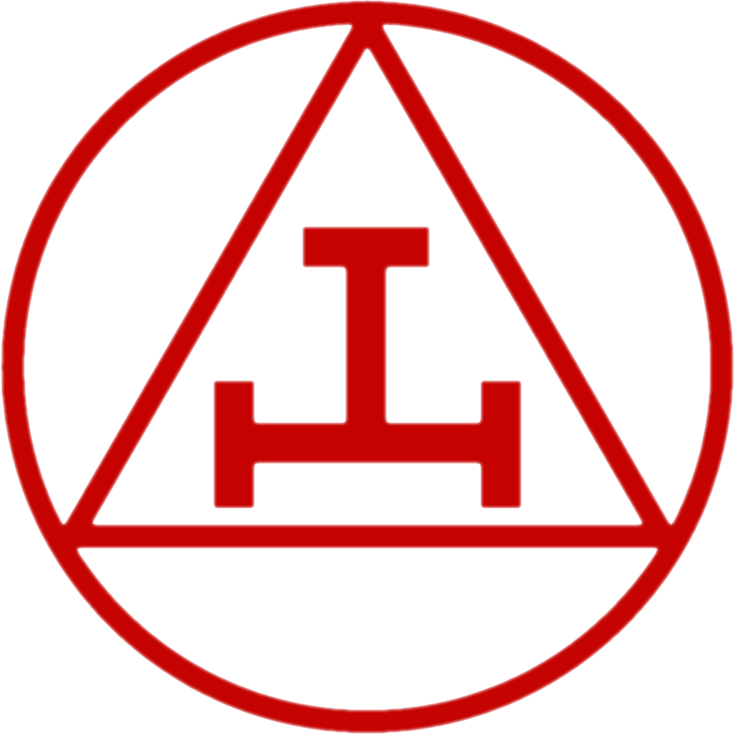
Triple Tau – Grand Emblem of Royal Arch Masonry
The Grand Lodge of Chile in its various treaties and documents on Anglo-Saxon Freemasonry accepts and recognises the so-called pure and ancient Freemasonry of England composed of the first three degrees including the Royal Arch within the symbolism.
This was clearly established and approved in an assembly of the Grand Lodge of Chile after hearing the report of the Great Councillor of Foreign Affairs of the Grand Lodge of Chile for the period June 2008 to May 2009, in which the Royal Arch is recognised as an integral part of Emulation.
The foregoing was also published in the Masonic magazine of the Grand Lodge of Chile in which it gives an account of the scope of said Assembly.
Furthermore, we wish to remind our brothers of obedience that there is a Decree of the Grand Lodge of Chile that recognises the right of the lodges that work Emulation so that they can establish the Royal Arch, and in relation to that we can inform them that it is working in the relevant regulation.
The Emulation Ritual is undoubtedly the most widespread among a score of English rituals and it is worked the same everywhere.
Finally, we would like to emphasise that the pure and ancient Freemasonry of England comprises all known degrees and the Royal Arch as an integral part of the Degree of Master Mason, forming an inseparable and irreplaceable whole.
However, rituals are teaching methods that enrich the Masonic formation with certain accents that each brother can choose as closer to his convictions and ideals.
In conclusion, we only wish to emphasise that as long as the faithful and true members apply the ritual in the way conceived in their lives and actions, the Order will be a centre of transcendent union on all planes, and will experience the Hermetic aphorism of ‘as above, so below’.
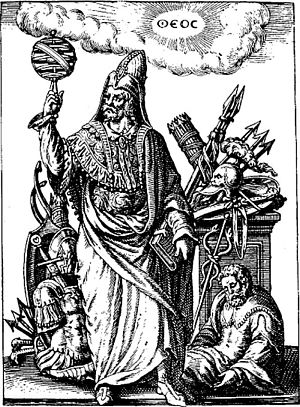
Hermes Trismegistus. – ‘as above, so below’.
IMAGE LINKED: wikimedia Attribution 4.0 International (CC BY 4.0)
In memory of my Godfather
Q: .H :. Nelson Morales Barrientos
From your Q: .H :. Carlos Francisco Ortiz
Editor’s Note: the word ‘acception’ is now obsolete in the English language and is commonly replaced with ‘acceptance’.
Further Research
Reference Web Sites
Grand Lodge of Chile
https://www.granlogia.cl/
E.1.1 The London Company of Freemasons https://nullens.org/an-outsiders-view-of-freemasonry/part-e-freemasons-guide/e-1-1-the-london-company-of-freemasons/
The London Regulations for the Trade of Masons of 1356*
http://projects.mcah.columbia.edu/medieval-architecture/htm/sw/ma_sw_prim_london_regs_1356.htm
The Forgotten Six – The First Speculative Freemasons
http://www.masonicnetwork.org/blog/2009/the-forgotten-six-%E2%80%93-the-first-speculative-freemasons/
The York Ordinances (1370) http://theoldcharges.com/chapter-5.html
1813 Articles of Union, by Yasha Beresiner – http://www.freemasons-freemasonry.com/articles_union_1813.html
Article by: Carlos Francisco Ortiz

Carlos was initiated in 2015 in Equality Lodge No. 88. Joined Fraternal Action Lodge No. 42 in 2018. (under the regular Grand Lodge of Chile)
During his university life, and before receiving Masonic light, he participated in the reorganization and foundation of Clans of the Youth Fraternity. Alpha Pi Epsilon.
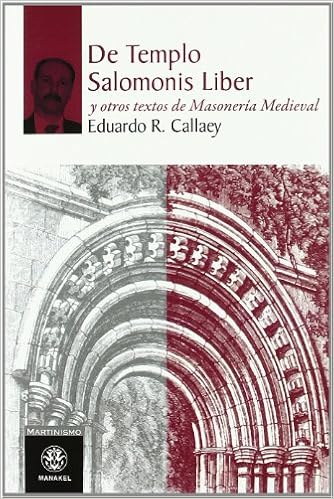
Recent Articles: by Carlos Francisco Ortiz
 Universal Freemasonry, beyond its particular and different rites and rituals, is an esoteric school itself since there can be no Freemasonry without esotericism. |
 The difference between equity and equality? Equality means providing everyone with the same amount of resources regardless of their needs. Equity is when resources are shared based on each person needs. |
 Discover how the Grand Lodge of China escaped the power of communism. |
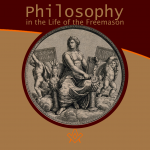 Philosophy in the Life of the Freemason Before the dark night of dogmatic thought, philosophy is the dawn of man, and the light for the Mason in his search for truth. |
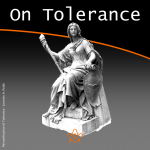 Tolerance is understood as respect for the ideas, beliefs, and practices of others when they are different or contrary to one's own. |
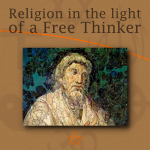 Religion in the light of a Free Thinker Every Mason is a sincere seeker of light, of all light that allows him to advance in his search for truth. |
 Life is shadow, death is light. We live in darkness and we die in the light - read on to learn more about 'a Mason's thought about death'. |
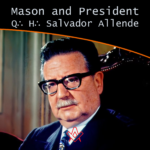 A Mason betrayed - the tragic story of President Salvador Allende. |
 The Mason and his Consciousness of Time Nobody can buy life, life is spent and the expense of life is time. As time goes by, life is spent. |
 Human life is itself trial and error, however, there are errors and horrors, and that is the remarkable difference between the actions of the profane and the actions of the Mason. |
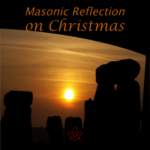 Masonic Reflection on Christmas What is the connection between Freemasonry, Christmas and pagan festivals? |
 Dear Brother - Q∴H∴ Jaime Galté Carré |
 Development of the Emulation Ritual Relevant historical background in the evolutionary development of the Emulation Ritual |
 What is Retejador? And why is it so important? |
 The Dream After the Initiation The dream, in a profane sense, is understood as a biological state or condition, as that which is an integral part of daily life |
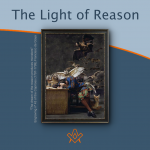 How does man think to himself and think of the universe |
masonic knowledge
to be a better citizen of the world
share the square with two brothers

click image to open email app on mobile device



